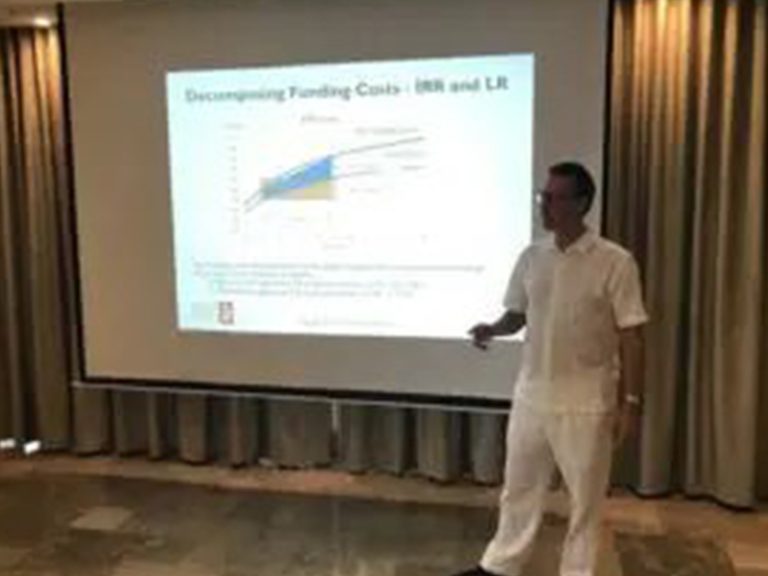
ALM Workshop – Miami – Jun 2019
Preparing for a Change in the Direction of Interest Rate Movements
I want to thank the delegates from banks in India, Puerto Rico and the US who attended my workshop in Miami this week. (As promised, mojitos were served and they were delicious – the fresh sugar cane was a nice touch!)
We began the workshop with a review of the history of interest rate and liquidity risk, highlighting lessons learned in the S&L crisis in the 1980s, the rapid decline in rates following the dot-com bubble, the subsequent run-up in rates from 2004-6 and in the liquidity market shutdown in 2008-9. It’s good to have a sense of these events especially as it has been some time since we have experienced a material move in interest rates or the price of liquidity.
Interest rate risk management continues to be a key focus at institutions around the globe, especially as the Fed is quickly pivoting from increasing rates to decreasing rates and the ECB is threatening to take the overnight deposit rate even lower (as if negative 40 bps is not low enough or how zero-rate retail deposits can become an increasingly expensive source of funding). Organizations that have worked hard to create asset-sensitive balance sheets are bound to discover that the decline in floating-rate loan and bond yields will happen quickly; in the absence of effective and substantial hedges, deposit rates will need to be cut drastically (think beta equal to one) in order to mitigate downward pressure on margins.
I also demonstrated how the FTP engine contained within the behavioral and pricing model for non-maturity deposits I developed produces FTP rates that send an immediate signal to deposit gatherers that customer rates (on certain products) must be reduced quickly if deposit spreads (and bank margins) are to be protected. I contrasted the benefits of this model with the tendency of organizations to focus on the growth of deposit volumes as a proxy for the value of their deposit franchises; these organizations will almost certainly be too slow to lower deposit rates or will be confused about which deposit rates to lower; their shareholders will not be pleased!
We followed the model demonstration with an extensive discussion on the theory and practice of FTP which highlighted the need to model the earnings AND earnings risk profile of the mismatch center; this requirement creates the tension necessary to insure that all lenders have been charged for the interest rate and liquidity risk they create and that all deposit gatherers are properly compensated for the hedging power (or lack thereof) of the deposits they bring. The key benefit of this tension is three-fold: lenders and deposit gatherers are immunized against interest rate and liquidity risk, interest rate and liquidity risk are more accurately and completely measured and ALCO can be held accountable for how effectively it manages these risks. By the end of the discussion, everyone in the room understood the benefits of a complete and well-functioning FTP framework.
For information about future workshops, my Events calendar has been updated through year-end.
